Showing Spotlights 745 - 752 of 2785 in category All (newest first):
 Self-powered nanotechnology based on one type of nanogenerators - piezoelectric nanogenerators - aims at powering nanodevices and nanosystems using the energy harvested from the environment in which these systems are suppose to operate. This offers a completely new approach for harvesting mechanical energy using organic and inorganic materials. Researchers have now reported a novel bio-piezoelectric nanogenerator using naturally abundant, self-aligned cellulose fibrous untreated onion skin as efficient piezoelectric material.
Self-powered nanotechnology based on one type of nanogenerators - piezoelectric nanogenerators - aims at powering nanodevices and nanosystems using the energy harvested from the environment in which these systems are suppose to operate. This offers a completely new approach for harvesting mechanical energy using organic and inorganic materials. Researchers have now reported a novel bio-piezoelectric nanogenerator using naturally abundant, self-aligned cellulose fibrous untreated onion skin as efficient piezoelectric material.
Nov 15th, 2017
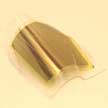 For enhanced visualization experience, high resolution display technology with fast frame rate to suppress the motion blur at that resolution is essential. In modern display technologies, which are mostly active matrix display system, there are planar thin film transistors (TFTs) which enable both high resolution and fast imaging. Scaled TFTs can provide high resolution. Fast switching can be facilitated by the scaling as well as high mobility channel material. In new work, researchers have shown that both high resolution and fast frame rate display technology is possible, irrespective of the active channel material.
For enhanced visualization experience, high resolution display technology with fast frame rate to suppress the motion blur at that resolution is essential. In modern display technologies, which are mostly active matrix display system, there are planar thin film transistors (TFTs) which enable both high resolution and fast imaging. Scaled TFTs can provide high resolution. Fast switching can be facilitated by the scaling as well as high mobility channel material. In new work, researchers have shown that both high resolution and fast frame rate display technology is possible, irrespective of the active channel material.
Nov 14th, 2017
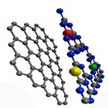 Efficient electrocatalysts lie at the heart of a series of significant energy conversion and storage technologies, and atomically precise understanding of the influences of component dopants is crucial for looking into the reaction mechanism and controlled synthesis of the desired electrocatalysts. Graphitic carbon nitride is a promising electrocatalytic material owing to its intrinsically high N content and abundant edge sites. This material has been researched towards some of the most significant electrocatalytic reactions including oxygen reduction/evolution reaction and hydro evolution reaction. New work has comprehensively explored the influences of component elements within graphitic carbon nitride motiety for electrocatalytic reactions.
Efficient electrocatalysts lie at the heart of a series of significant energy conversion and storage technologies, and atomically precise understanding of the influences of component dopants is crucial for looking into the reaction mechanism and controlled synthesis of the desired electrocatalysts. Graphitic carbon nitride is a promising electrocatalytic material owing to its intrinsically high N content and abundant edge sites. This material has been researched towards some of the most significant electrocatalytic reactions including oxygen reduction/evolution reaction and hydro evolution reaction. New work has comprehensively explored the influences of component elements within graphitic carbon nitride motiety for electrocatalytic reactions.
Nov 13th, 2017
 The remarkable properties of some natural materials have motivated many researchers to synthesize biomimetic nanocomposites and other nanostructured materials that attempt to reproduce Nature's achievements. Recent research has indicated that the amplification of natural materials' mechanical properties far beyond those of the components that comprise them originates mainly from: 1) a hierarchical micro-/nanoscale architecture and 2) abundant effective interface interactions. A new progress report provides insight into the development of bio-inspired structural materials.
The remarkable properties of some natural materials have motivated many researchers to synthesize biomimetic nanocomposites and other nanostructured materials that attempt to reproduce Nature's achievements. Recent research has indicated that the amplification of natural materials' mechanical properties far beyond those of the components that comprise them originates mainly from: 1) a hierarchical micro-/nanoscale architecture and 2) abundant effective interface interactions. A new progress report provides insight into the development of bio-inspired structural materials.
Nov 10th, 2017
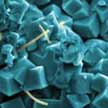 Metal-organic frameworks (MOFs) are well-ordered, lattice-like crystals. The nodes of the lattices are metals, which are connected by organic molecules. Their size-controllable nanopores, special structure and large surface area make MOFs very attractive materials for next-generation, highly sensitive gas sensors. In new work, researchers demonstrate a process that can be used for developing low-cost and highly sensitive gas sensors. By increasing the sensitivity, the amount of gas sensitive material and device size can be reduced which in turn would reduce the overall cost of the device and energy consumption.
Metal-organic frameworks (MOFs) are well-ordered, lattice-like crystals. The nodes of the lattices are metals, which are connected by organic molecules. Their size-controllable nanopores, special structure and large surface area make MOFs very attractive materials for next-generation, highly sensitive gas sensors. In new work, researchers demonstrate a process that can be used for developing low-cost and highly sensitive gas sensors. By increasing the sensitivity, the amount of gas sensitive material and device size can be reduced which in turn would reduce the overall cost of the device and energy consumption.
Nov 7th, 2017
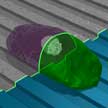 The crucial roles of the physicochemical properties of cell culture substrates on function and behavior of a wide range of the cells are becoming well-studied in the current literature, using experimental approaches. However, development of in silico approaches for prediction of cell responses to the physicochemical properties of substrates is still in its infancy. In new work, an international team of researchers has developed a unifying computational framework to create a multi-component virtual cell model to probe cell function/behavior in silico.
The crucial roles of the physicochemical properties of cell culture substrates on function and behavior of a wide range of the cells are becoming well-studied in the current literature, using experimental approaches. However, development of in silico approaches for prediction of cell responses to the physicochemical properties of substrates is still in its infancy. In new work, an international team of researchers has developed a unifying computational framework to create a multi-component virtual cell model to probe cell function/behavior in silico.
Nov 1st, 2017
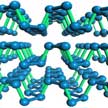 Since the ground-breaking discovery of two-dimensional (2D) black phosphorus (phosphorene), it has created global research interest and triggered ripples of excitement in the scientific community due to its intriguing optical, mechanical and electronic properties. Researchers have looked into the state-of-the-art development of phosphorene, including its structure, preparation routes, anisotropic properties, device applications as well as the bottlenecks encountered by the research community. However, there still are quite a few obstacles and opportunities for scientists to tackle.
Since the ground-breaking discovery of two-dimensional (2D) black phosphorus (phosphorene), it has created global research interest and triggered ripples of excitement in the scientific community due to its intriguing optical, mechanical and electronic properties. Researchers have looked into the state-of-the-art development of phosphorene, including its structure, preparation routes, anisotropic properties, device applications as well as the bottlenecks encountered by the research community. However, there still are quite a few obstacles and opportunities for scientists to tackle.
Oct 31st, 2017
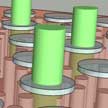 Memristors present an opportunity to make new types of computers that are different from existing von Neumann architectures, which traditional computers are based upon. In new work, researchers have demonstrated the ability to reversibly control the learning properties of memristors via optical means. They show that light can be used in a reversible manner to change the connection strength (or conductivity) of artificial memristor synapses and as well control their ability to forget i.e. we can dynamically change device to have short-term or long-term memory. The reversibility is achieved by changing the polarization of light.
Memristors present an opportunity to make new types of computers that are different from existing von Neumann architectures, which traditional computers are based upon. In new work, researchers have demonstrated the ability to reversibly control the learning properties of memristors via optical means. They show that light can be used in a reversible manner to change the connection strength (or conductivity) of artificial memristor synapses and as well control their ability to forget i.e. we can dynamically change device to have short-term or long-term memory. The reversibility is achieved by changing the polarization of light.
Oct 30th, 2017
 Self-powered nanotechnology based on one type of nanogenerators - piezoelectric nanogenerators - aims at powering nanodevices and nanosystems using the energy harvested from the environment in which these systems are suppose to operate. This offers a completely new approach for harvesting mechanical energy using organic and inorganic materials. Researchers have now reported a novel bio-piezoelectric nanogenerator using naturally abundant, self-aligned cellulose fibrous untreated onion skin as efficient piezoelectric material.
Self-powered nanotechnology based on one type of nanogenerators - piezoelectric nanogenerators - aims at powering nanodevices and nanosystems using the energy harvested from the environment in which these systems are suppose to operate. This offers a completely new approach for harvesting mechanical energy using organic and inorganic materials. Researchers have now reported a novel bio-piezoelectric nanogenerator using naturally abundant, self-aligned cellulose fibrous untreated onion skin as efficient piezoelectric material.
 Subscribe to our Nanotechnology Spotlight feed
Subscribe to our Nanotechnology Spotlight feed





